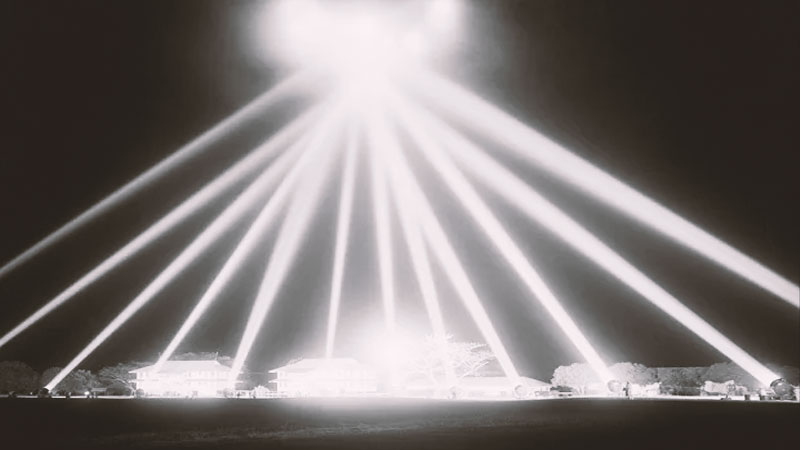
It all began on the night of February 25, 1942, less than three months after the United States joined the Allies in World War II because of the attack on Pearl Harbor by the Imperial Japanese Navy.
Around 2:30 a.m., radar detected several objects 120 miles off the west coast of Los Angeles in the Pacific Ocean, heading for the mainland.
Air raid sirens began to sound and a massive blackout left the city of Los Angeles into total darkness.
Troops began sweeping the skies with spotlights in the eminence of an air strike by Japanese forces, as just two days earlier, on February 23, 1942, a Japanese submarine emerged off the coast of Santa Barbara, California, bombing an oil field and refinery.
Shortly after 3 a.m., unidentified objects began to be seen flying over Los Angeles, and troops from the 37th Coastal Artillery Brigade began firing .50 caliber machine guns and anti-aircraft guns, with no effect on the mysterious aircraft.

“I could barely see the planes, but they were up there, yes. I came to see six planes, and the projectiles were exploding around them,” wrote an artillery officer named Charles Patrick in a letter.
The battle continued for more than an hour, and by the time the “cease fire” order was given, Los Angeles artillery batteries had fired more than 1,400 rounds of anti-aircraft ammunition into the sky.
The general blackout only ended after 7 a.m., and it was only in broad daylight that U.S. military units made an intriguing discovery: there was no enemy attack.
“While the reports are conflicting and all efforts are being made to ascertain the facts, it is clear that no bombs have been dropped and no planes have been dropped,” says a statement from the Army’s Western Defense Command.
The confrontation was covered by several newspapers and media at the time, and ironically, the only damage done came from the more than 1,400 shots fired by the American artillery itself, which left many windows broken and destroyed vehicles, houses, buildings and even a golf course.

“Powerful spotlights from countless stations pointed to the sky, while anti-aircraft batteries dotted the sky with beautiful, albeit sinister, bursts of orange shrapnel,” reported the Los Angeles Times.
Secretary of the Navy Frank Knox regarded the event as a false alarm caused by “nerves,” but the local Air Force nevertheless stated that there were actually anomalous aerial objects in the sky that night, and Secretary of War Henry Stimson stated that at least 15 aircraft had flown over the city and even proposed the theory that “ghost planes could be commercial aircraft operated by enemy agents.”
According to the New York Times, some witnesses had spotted “a large floating balloon-like object” while others had spotted it from a plane to several dozen of them.
At that time no one spoke of UFOs and the famous Roswell Incident would only happen five years later, in 1947.
“The more you examine the entire february 25 incident in the Los Angeles District, the more incredible it becomes,” said the New York Times article.
Years later, the Japanese military stated that they had never flown over the city of Los Angeles during World War II, which resulted in a series of theories involving government conspiracies and visits from flying saucers and extraterrestrials.
In any case, the Battle of Los Angeles is one of the clearest evidence we have on the UFO phenomenon.




















